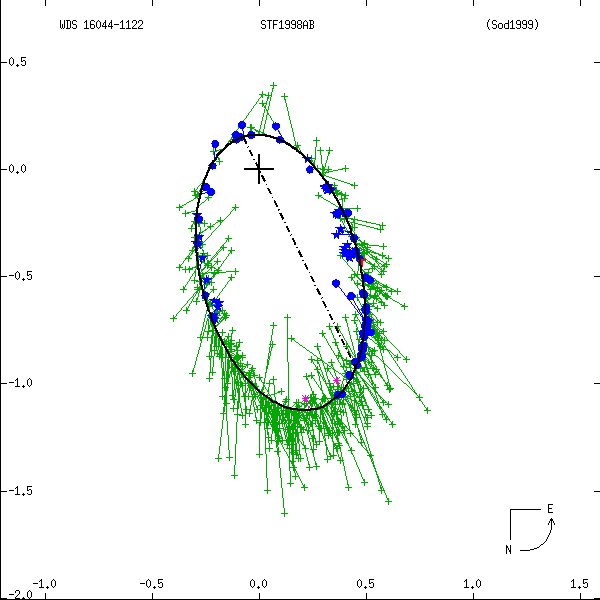
 |
Xi Scorpii A is seen to go about Xi Sco B (or B around A: it's not clear) with a period just short of 46 years in a rather highly elliptical orbit in which they average 18 Astronomical Units apart, about the distance Uranus is from the Sun. From the Sixth Catalog of Orbits of Visual Binary Stars , W. I. Hartkopf and B. D. Mason, US Naval Observatory Double Star Catalog, 2006. |